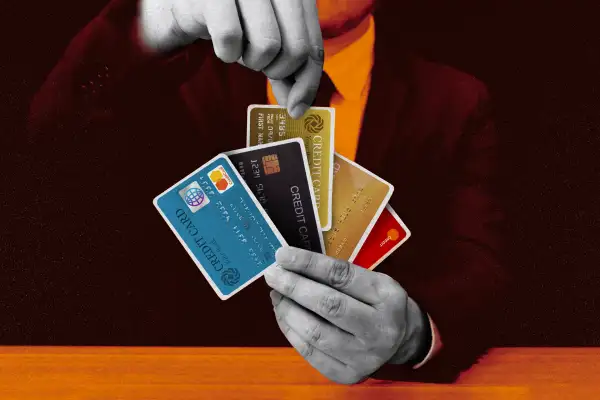Americans Are Getting Tons of New Credit Cards to Cope With Inflation

As oil prices spiked and inflation intensified with Russia’s invasion of Ukraine in February, Americans responded by opening new credit cards.
Lots of them.
New data from credit reporting agency Equifax shows that banks issued 18.6 million new credit cards in the first three months of 2022 — a roughly 28% jump from the same period last year.
It’s an escalation of an ongoing trend. Lenders have been competing for borrowers flush with post-pandemic cash ever since the COVID-19 stimulus checks went out. The problem is, Americans are draining those coffers fast — and the prospect of shiny new credit lines could prompt more people to take on debt as they spend down their savings.
In 2021, Americans opened a total of 73.5 million new credit cards. A little math indicates that if folks keep opening new cards at today’s rapid rate, we’ll eclipse last year’s figure by roughly 1 million.
All of those new cards mean a lot more outstanding lines of credit. In aggregate, all those new cards have added a whopping $91.2 billion to the nation's collective credit limit — about a 60% increase on a year-over-year basis. The average credit limit for the new bank cards opened in March was $5,049, an uptick of about 30% compared to March of last year.
What’s more, a greater slice of that pie is going to subprime borrowers, defined as borrowers with VantageScore credit scores below 620. Although subprime borrowers make up a tiny slice of the market in terms of absolute dollars — their credit limits tend to be much lower than those for people with higher credit scores — banks’ willingness to lend to them is growing. In the first quarter of 2022, Equifax found that the aggregate subprime credit limit total jumped by roughly 43% over the same time period a year ago.
And people are using that credit right away.
According to Federal Reserve data, revolving credit (generally viewed as a proxy for credit cards in that it refers to a borrowing arrangement that doesn't have a predetermined end date) grew at an annualized rate of roughly 20% in April. That, too, suggests that people's appetite for borrowing is growing as prices on all sorts of everyday items continue to rise.
Experts say credit indicators aren’t flashing warning signs of distress yet. As of the end of March, overall credit utilization hovered just below 20% — well within the range of the 30% credit experts use as a rule of thumb when advising borrowers about how much of their available credit they should tap at any given time.
Looking forward, the looming concern is that higher limits will ultimately prompt people into taking on more debt to cope with inflation — debt that will become increasingly expensive to service as the Fed continues to increase interest rates in its bid to quash inflation.
If you're thinking about opening a new credit card, consider a card that offers 0% interest for an introductory period of time — provided you're confident you can pay off the accrued balance before that teaser rate ends. If you expect to revolve a balance, get a card with the lowest interest rate you can find.
More from Money:
Inflation Is Hitting the Middle Class Especially Hard

